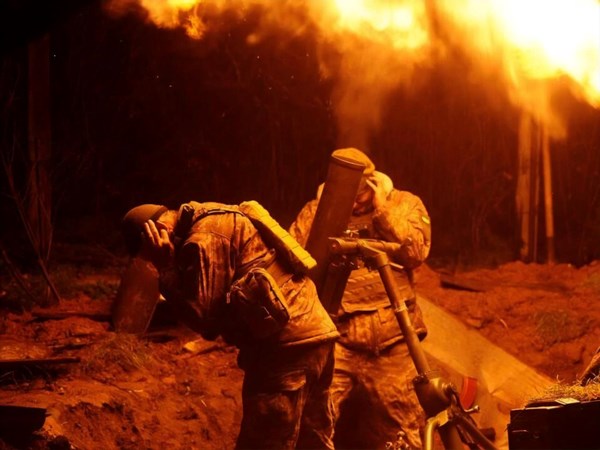Fierce battles in Toretsk: Russian forces make gains as Ukraine fights to hold key defensive positions
The Toretsk direction has recently become the hottest spot on the entire eastern front. Unlike in Vuhledar, Russian forces have deeply entrenched themselves straight into Toretsk but are not making moves on the flanks, though defending the city remains a significant challenge. Is there hope to hold the city?
On June 18-19, 2024, Russian troops began a slow push toward Toretsk in the Donetsk region, initially capturing nearby settlements like Zalizne, Sjeverne, Zhelanne, Serhiyivka, and Ivanivka. Reports indicated that Russians had moved into the southern private sector, sparking fighting at the Toretsk cemetery.
Russian forces have been attempting to storm Toretsk from three directions since August 18, 2024. As of October 8, the tide seems to be turning against the Ukrainian Armed Forces (AFU). Fierce urban combat for every building entrance is occurring, according to Anastasia Bobovnikova, spokesperson for the "Luhansk" operational-tactical group.
According to Bobovnikova, Toretsk has become the hottest spot on the eastern front. The Russians have reached the eastern edge of the city and advanced toward the "Central" mine. The situation is fluid; while the AFU manages to reclaim some firing positions, elsewhere they face losses.
Russian troops utilize their standard warfare tactic: leveling the city with artillery before conducting small group assaults of three to five soldiers.
Russian war correspondents claim that the Russian forces have encircled a portion of Ukrainian troops in Toretsk, allowing evacuation only through limited corridors, one of which leads to areas controlled by Russian forces.
"This situation led to part of the Ukrainian military encountering deadly fire while trying to escape Toretsk," military communities report.
However, analysts from the U.S.-based Institute for the Study of War (ISW) say they have yet to find any visual evidence supporting these claims.
Toretsk is a key part of the Horlivka-Yenakiieve agglomeration, located approximately 15 kilometers west of Horlivka, already occupied by Russian forces. Toretsk serves as a defensive position for the "Kostiantynivka-Kramatorsk" agglomeration and a potential launchpad for a future AFU offensive on Horlivka.
Following Russia’s full-scale invasion, Toretsk became a crucial logistics hub for Ukrainian forces. According to Deep State maps, Russian forces have penetrated the city center, occupying about a third of it.
The AFU General Staff has not confirmed Russian advances in Toretsk in its morning battlefield report. According to military command data, Russian forces executed 12 attacks near Toretsk, Dyleivka, and Nelepivka.
Russia's advantage in infantry, artillery, and aviation allows for classic combat tactics, promising no depletion of resources; casualties are replenished monthly.
Nonetheless, near the industrial zone, progress in Toretsk has stalled, according to Oleksandr Kovalensko, a military-political observer with the "Information Resistance" group.
"The occupiers are fighting for every house, but this also poses challenges to Ukraine's defense forces. Holding the line under Russian artillery fire is extremely difficult," he tells Focus.
The fighting here differs from the assault on Vuhledar: Russians have penetrated deeply but haven't shifted to flank maneuvers. Entering the city prevents quick maneuvers by Russian forces, notes Ivan Stupak, a military expert at the Ukrainian Institute for the Future.
"There is a high chance Russians could get bogged down in Toretsk, like a vehicle in the mud. A swift change in circumstances may occur if the flanks are breached from Dachne and Dyleivka in the south, and Zalizne in the north," he comments to Focus.
The Russian tactics in Toretsk resemble the battle for Bakhmut, one of the bloodiest clashes in the war, where Russian advances came at huge losses in urban combat.
The slow pace can partly be attributed to the fatigue of Ukrainian defenders and Russia's willingness to absorb losses and expend resources for victory.
"Certainly, retaining control over Toretsk amid this dynamic will be challenging. In the near term, the AFU risks losing Selydove and Toretsk. Perhaps then, Russian forces may pause, given intense fighting on the Lyman-Kupyansk front," former AFU General Staff spokesperson, Colonel Vladislav Seleznev, suggests.
The analyst predicts that the 25th meeting in the "Ramstein" format, set for October 12, will not change Ukraine’s partners' cautious stance, and no miracle on the front lines is expected.
Over August and September 2024, Russian forces occupied more than 684 square kilometers in Donetsk. By early October, Russian forces had secured around 62% of the region.
Colonel Oleksandr Okhrimenko, commander of the 72nd Separate Mechanized Brigade named after the Black Zaporozhians, confirmed that not all wounded AFU soldiers could be evacuated during the retreat from Vuhledar.
